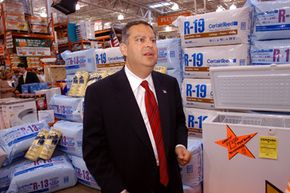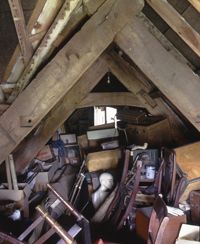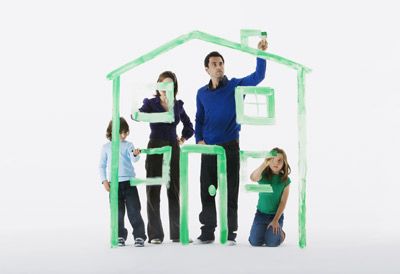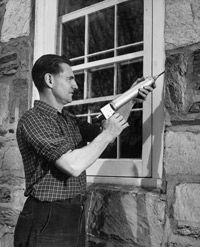In autumn and spring, mild temperatures make it easy to forget about your home's energy efficiency. But when your air conditioner or furnace kicks in during summer and winter, the energy wasted heating and cooling your home becomes painfully obvious. It can hit your bottom line hard, especially due to the price spikes in electricity and gas during the most extreme months. As the demand for electricity, gas and heating oil increases, so, too, do the prices for these commodities.
Homeowners have ways of beating the utility companies by taking steps to make their homes more energy efficient. There are plenty of options to make your home "greener," but what's the best way to dramatically lower the energy use in your home? It turns out that the improvement that produces the most significant result is also the cheapest.
Advertisement
A lack of insulation often accounts for the biggest amount of energy loss in the average home. Heat escapes from homes during the winter and intrudes during the summer through a house's envelope. This envelope consists of all the ceilings, floors, outer walls, windows and doors in your house. Simply by sealing this envelope, you can decrease your heating and cooling costs by an average of 20 percent [source: Energy Star].
As if that weren't enough, some countries offer extra financial incentives to their citizens for making their homes energy efficient. In the United States, residents can get up to a $500 tax credit on efficient doors, $200 on windows and as much as $2,000 on a solar water heater [source: USA Today]. Canada is spending $300 million over four years on grants to energy-saving residents. The average grant is around $1,000 per homeowner [source: The News Room]. And the European Union is in talks for reducing taxes associated with energy-efficient fixtures.
So how do you determine if your envelope needs sealing, and, if it does, what's the best way to do it? The United States Department of Energy and the Environmental Protection Agency's joint Energy Star effort suggests you start by doing a simple inspection of your home. Since most of the temperature exchange in a home takes place in the attic and basement, these are good places to begin.
In the attic, examine your current insulation. Does it look like it's seen better days? Perhaps it's time to replace it, but before you do, inspect your old insulation. Look for dirty spots, as well as frost-covered spots (if it's winter) or wet spots (during summer). All of these are indicators that air is passing through the insulation. Pull it back, and you'll most likely find some holes to fill. Also take a look at the area where the roof meets the tops of your house's walls. Are there gaps where air is coming in from the outside? Be sure to inspect any pipes leaving the home through the attic walls or the roof, including your furnace flue -- the duct that carries exhaust outside -- chimney and plumbing. Are there gaps around them?
In the basement or crawlspace, inspect the area where the foundation of the house meets the bottom of the walls above. Look for gaps, and, like in the attic, look for spaces between the foundation and walls where pipes and ducts leave the basement. Also pay attention to the rim joists -- the wood or concrete columns that support the floor above. Are there gaps present?
By now you've probably found some areas in your house that could use some attention. Read the next page to find out how to fix them.
Advertisement



